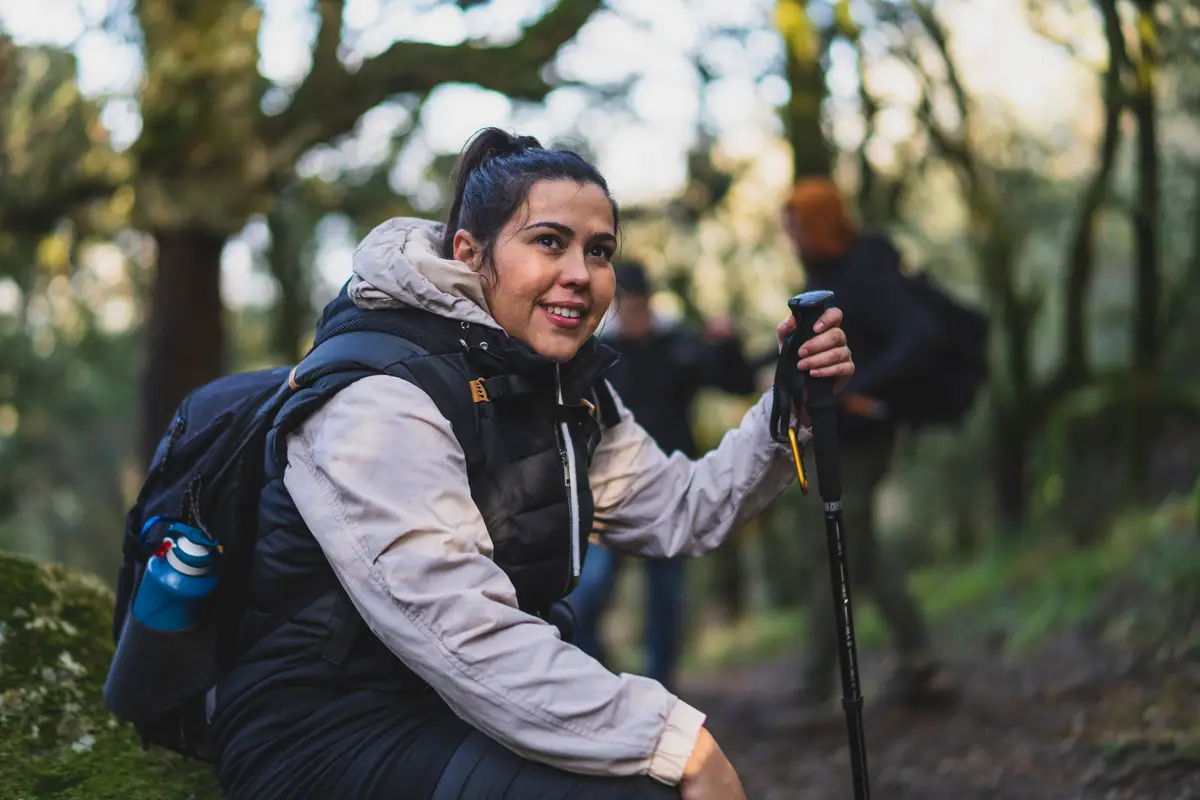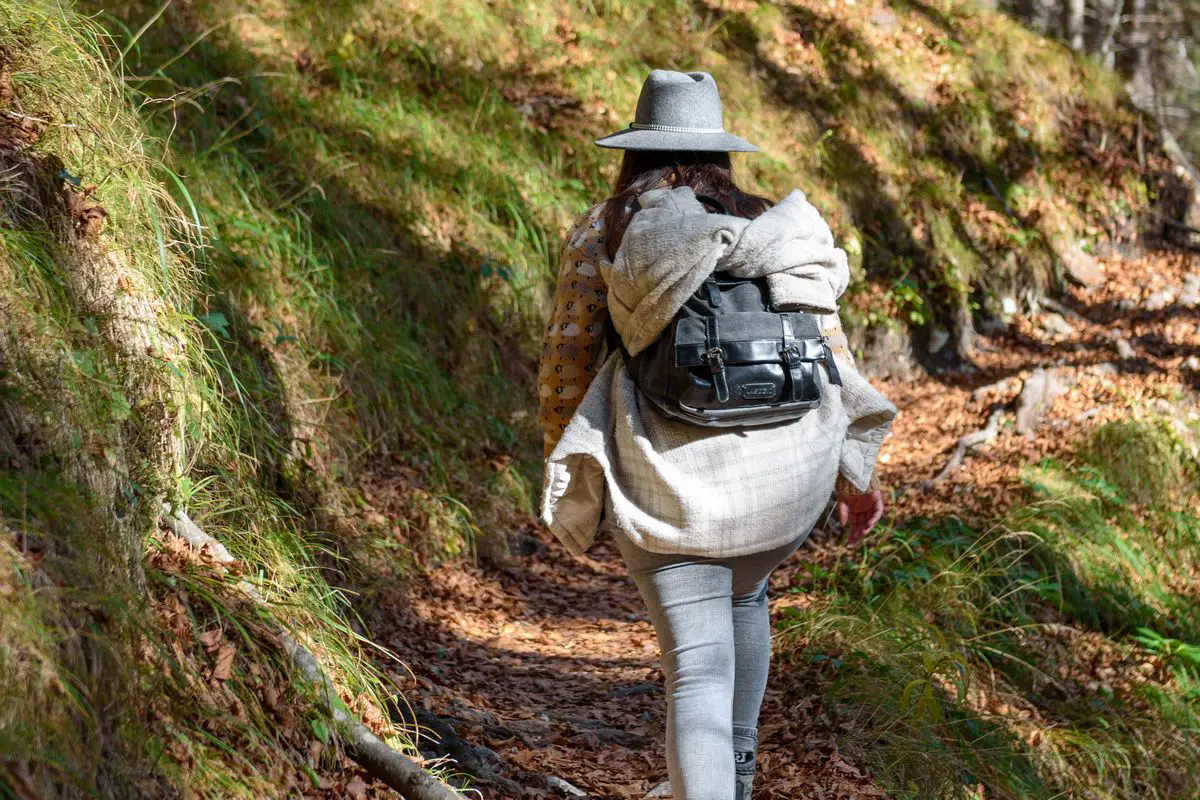
4 Best Michigan hiking trails offer a wide variety of experiences that showcase the state’s natural beauty, from dense forests and rolling hills to lakeshores and sand dunes. Whether you’re looking for a peaceful walk or a more challenging adventure, Michigan hiking trails have something for everyone. With so many Michigan hiking trails to choose from, you’ll find options that fit your pace and interests.
These 4 Michigan hiking trails highlight the state’s diverse landscapes and provide unique outdoor experiences, making it easy for you to explore nature no matter your skill level. From waterfalls and historic sites to sandy dunes and quiet rivers, Michigan hiking trails have something special to offer. Michigan hiking trails are perfect for those who want to discover scenic spots and hidden gems across the state.
As you read, you’ll discover Michigan hiking trails that suit families, solo hikers, and backpackers alike. With clear directions and descriptions, Michigan hiking trails make it simple to plan your next trip into Michigan’s great outdoors. Whether you’re a local or a visitor, Michigan hiking trails will help you experience the best of what the state has to offer.

The 4 Best Michigan Hiking Trails
You will find a mix of rugged wilderness, scenic shorelines, and rich history across these top Michigan trails. Each area offers unique landscapes, from towering dunes to old-growth forests and flowing rivers. Michigan hiking trails vary in length and difficulty, so you can pick the right one for your skill level and interests.
Sleeping Bear Dunes National Lakeshore Trails
Sleeping Bear Dunes National Lakeshore is famous for its massive sand dunes along Lake Michigan’s shoreline, and Michigan hiking trails here are among the most scenic in the state. The Empire Bluff Trail offers breathtaking views of the dunes and lake after a moderate 1.5-mile hike, while the Pyramid Point Trail is a bit longer and takes you through forest and open dune ridges with wide views of the water. You can also explore the Cottonwood Trail for a shorter, family-friendly walk with interpretive signs about the dunes’ geology, making these Michigan trails perfect for all ages.
The Michigan trails at Sleeping Bear Dunes give you a chance to see a unique blend of open sand, forested areas, and beautiful lakeside scenery. Each Michigan hiking trail in this area provides a different perspective on the natural wonders of the dunes. Whether you want a short walk or a longer trek, Michigan trails at Sleeping Bear Dunes are a must-visit.
Pictured Rocks National Lakeshore Hikes
At Pictured Rocks National Lakeshore, Michigan trails bring you to colorful sandstone cliffs, waterfalls, and lakeshore views. The Lakeshore Trail is the longest Michigan hiking trail here, stretching over 40 miles and passing landmarks like Chapel Falls, Mosquito Falls, and Munising Falls. For a shorter trip, try the Chapel Loop, which circles around spectacular cliffs and offers views of the famous Chapel Rock.
Canyon Falls Roadside Park is a quick stop with easy access to a waterfall, making it one of the more accessible Michigan hiking trails in the area. Pictured Rocks is ideal if you want to explore lakeshore wilderness and waterfalls on Michigan hiking trails. The variety of Michigan trails at Pictured Rocks ensures there’s something for every hiker.
Porcupine Mountains Wilderness State Park Routes
Porcupine Mountains Wilderness State Park features some of the most rugged Michigan hiking trails in the Upper Peninsula. The Escarpment Trail runs 4.4 miles along high bluffs overlooking Lake of the Clouds, offering alpine-like views and passing old copper mining ruins. The park is known for its large forests and mountainous terrain, making these Michigan trails stand out from others in the state.
You can take shorter hikes on linked Michigan hiking trails or make an overnight trip camping in the wilderness. The Escarpment Trail is a highlight for those seeking striking views and challenging terrain on Michigan hiking trails in a remote setting. Porcupine Mountains is a top destination for adventurous hikers looking for the best Michigan hiking trails.
Manistee National Forest and River Loops
Manistee National Forest is home to some of the most popular Michigan hiking , including the Manistee River Trail, an 11-mile path that follows the free-flowing river through dense woods. This Michigan hiking trail connects with backcountry campsites and links to the North Country National Scenic Trail for longer hikes. The Manistee River Loop combines these Michigan hiking trails into a 23-mile route, perfect for a weekend backpacking trip.
This area is known for its peaceful river views and many camping spots right by the water, making Michigan hiking trails here a favorite for those looking to blend hiking and camping. Whether you’re seeking solitude or adventure, Michigan hiking trails in the Manistee National Forest deliver an unforgettable experience. The variety of Michigan hiking trails ensures there’s something for every outdoor enthusiast.

Planning Your Michigan Hiking Adventure
When preparing for your trip on Michigan hiking trails, consider the trail difficulty, unique natural features, and seasonal conditions. Choosing the right Michigan hiking trail and knowing what to expect can make your experience safer and more enjoyable. Gear, timing, and awareness of the environment are key factors when exploring Michigan hiking trails.
Easy and Family-Friendly Trails
If you want easy Michigan trails that are suitable for families or beginners, focus on spots with gentle terrain and short distances. Trails like the Old Growth Forest Trail in Hartwick Pines State Park offer a peaceful walk among towering pines without steep climbs, making them excellent Michigan hiking trails for all ages. Other great Michigan hiking trails include Rosy Mound Natural Area on the west side and Seidman Park, both providing accessible paths with beautiful views.
The River Trail at Tahquamenon Falls State Park is also fairly easy and provides stunning waterfall sights, making it one of the most scenic Michigan trails for families. For very short hikes, places like Antrim Creek Natural Area or Crahen Valley Park are perfect for quick outings with kids or seniors who want to experience Michigan hiking trails. Look for Michigan trails marked as easy or moderate, and check if they have restroom access or picnic spots, which can add comfort to your family outing.
Exploring Unique Natural Areas
Michigan trails cover a diverse mix of landscapes, allowing you to explore ancient forests, river valleys, or rugged dunes depending on the area you choose. The Jordan River Trail offers a remote, forested experience, while the Big Carp River Trail presents a more rugged adventure near waterfalls and rapids, both as top Michigan hiking trails. For sandy dunes and lake views, Ludington State Park’s Lighthouse Trail stands out, giving you a mix of beach and forest scenery along Michigan hiking trails.
If you prefer quiet nature reserves, areas like Sand Lakes Quiet Area provide solitude with lakes and wetlands, all accessible via Michigan hiking trails. Some Michigan hiking trails highlight the state’s unique ecosystems, like the Canyon Gorge Trail, which features layered rock formations and dramatic scenery. When picking Michigan hiking trails, consider what environment you want to explore to match your interests and skill level.
Seasonal Tips and Safety on the Trail
Seasonal Tips and Safety on the Trail are essential for anyone planning to hike in Michigan. Michigan’s changing seasons impact hiking conditions considerably, making it important to follow Seasonal Tips and Safety on the Trail for each time of year. In the spring and fall, hikers should be aware of muddy or icy sections, especially on trails like the Lower Tahquamenon Falls River Trail, where water levels can fluctuate and affect the terrain.
During summer, Seasonal Tips and Safety on the Trail recommend bringing insect repellent, sun protection, and plenty of water to handle the heat and bugs. Seasonal Tips and Safety on the Trail also become crucial in winter, when hiking is possible but requires careful preparation. Clean boots and traction gear are part of Seasonal Tips and Safety on the Trail for navigating slippery surfaces.
Checking weather forecasts and trail conditions is a key part of Seasonal Tips and Safety on the Trail before setting out. Carrying a map or using a GPS, especially in large areas like the Porcupine Mountains or Wilderness State Park, is another important aspect of Seasonal Tips and Safety on the Trail. Let someone know your plans and expected return time, as recommended by Seasonal Tips and Safety on the Trail.
Seasonal Tips and Safety on the Trail also include packing layers to adjust to temperature changes. Always respect trail signs to protect nature and your safety, following the best practices outlined in Seasonal Tips and Safety on the Trail. By following these Seasonal Tips and Safety on the Trail, hikers can enjoy Michigan’s beauty while staying prepared for changing conditions.

\

You must be logged in to post a comment.